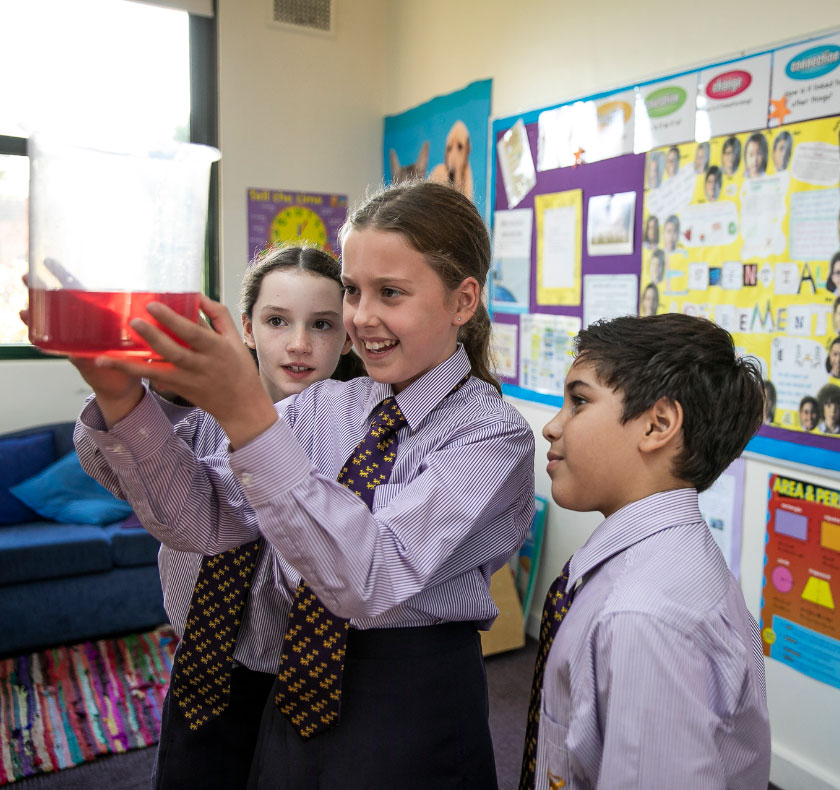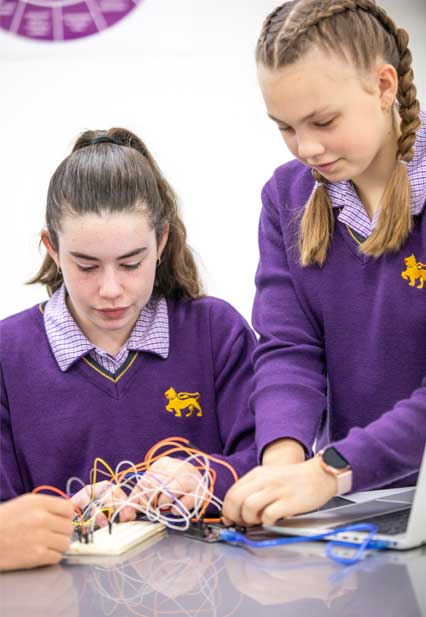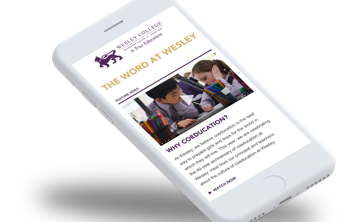
From a research lab to Science classrooms in schools, Erin Bruns has seen first-hand how perceptions of female scientists are changing for the better, paving the way for girls.
Erin Bruns is the Head of Faculty – Sciences at the Glen Waverley Campus and has worked at the College since 2016. She joined the Science Faculty after working as the Head of Sciences in numerous public schools across Melbourne. Erin also has extensive real-world experience, having worked in a number of laboratories in Melbourne prior to beginning her teaching career.
I grew up in regional Victoria and moved to Melbourne to study medical laboratory technology, with the view that I would work in a laboratory. I was given work experience at the Royal Children’s Hospital, working in the bone marrow transplant laboratory, where I was able to work with some exceptional diagnostic and research scientists. The understanding of white blood cells and leukaemia markers was really developing at this time and I learned a lot about new technologies and science just through this work experience.
The International Baccalaureate curriculum focuses on the need for international mindedness and collaboration and encourages students to become risk takers. Our focus in class is often on the need to work collaboratively with each other in designing and testing methods for their experimental questions. We share our findings and discuss the limitations of design to better our overall understanding. We need to model the role that human errors and serendipity play in scientific discovery. If it wasn’t for these things, Fleming would never have discovered the huge benefits of penicillin in fighting bacterial pathogens!

My first full-time laboratory job was at the Royal Children’s Hospital in the Core Laboratory, which incorporated their biochemistry, haematology and blood banking laboratories. The technologies used then (which was in the early 2000s) have changed so much since – advances in scientific instrumentation for diagnosis and research are occurring all of the time, and things I studied at university were so different to what I was using when I started working in Microbiology at St Vincent’s Pathology only a few years later. Being one of the busiest hospitals in Melbourne, I was surrounded by amazing scientists – the majority of whom were female!
Encouraged by the experience I gained while working in the industry, I decided to pursue a degree in teaching. My experience working in the field, and my knowledge that the perception of scientists and careers in STEM needs to be better understood by more people, has allowed me to become a better teacher. I see the need for students to understand the role that science plays in our everyday lives, but also the impact scientists are having on both a local and global scale. Never have epidemiologists and immunologists been so easily recognisable and been given such a platform. The work of these individuals has been ground-breaking, and I often wonder if people can see that the gender gap in this industry is decreasing every day. The perception that scientists are men with curly, frazzled hair and lab coats is a stereotype that is definitely not aligned with the real world.
I absolutely love teaching science! Seeing the wonder and amazement in students’ reactions to events that can be explained by the technologies or knowledge scientists have gained over years of research and experimentation is a privilege. Teaching students to harness their questions and use these to hypothesise, experiment and inform others is what being a scientist is all about – whether that be in a school, laboratory or industry.

Seeing the shift in how students perceive scientists is also extremely encouraging. When we teach Year 7 Science, one of the most common introductory activities is to ask the students to draw a scientist. When I started teaching over 15 years ago, I could almost guarantee that 22 out of the 25 students would draw an ‘Einstein-esque’ scientist with wild hair, glasses with stains on their lab coats and usually holding a bubbling, coloured solution in a test tube. Only two years ago did I have a class of students in which there were female scientists drawn by more than half of the students. They didn’t all have wild hair or lab coats, many were working at computers, some in hospitals, and others were working collaboratively with other scientists in design and technology. I feel Wesley has provided students with role models across these curriculum areas to help them understand that this is what science is really about.
We model and discuss that advances in technology are required to make significant gains in our scientific knowledge and understanding. The fact that numerous staff have experience in industry, and the benefit of knowing how the gendered nature of our subject has changed, provides even greater context for our students.
The International Baccalaureate curriculum focuses on the need for international mindedness and collaboration and encourages students to become risk takers. Our focus in class is often on the need to work collaboratively with each other in designing and testing methods for their experimental questions. We share our findings and discuss the limitations of design to better our overall understanding. We need to model the role that human errors and serendipity play in scientific discovery. If it wasn’t for these things, Fleming would never have discovered the huge benefits of penicillin in fighting bacterial pathogens!
With the introduction of the Rennie Coutts STEM Scholarship for Girls, and the significant number of female role models in our Science Faculty, we are well equipped to help nurture young female scientists and provide them with the knowledge and understanding they need to succeed in a rapidly changing world. The inquiry questions that we develop for our MYP units, and the links we create with the Science as a Human Endeavour strand in the ACARA syllabus, have allowed us to pose engaging and unique learning experiences that harness the need to ask questions and find tools to predict, explore and answer these questions. As part of the Rennie Coutts STEM Scholarship for Girls, we will have a number of female mentors to engage with our scholarship recipients and provide them with further role models at the forefront of recent advances and technological gains in scientific knowledge, understanding and further research taking place every day.
Erin Bruns is the Head of Faculty – Sciences at the Glen Waverley Campus.
Applications for the Rennie Coutts STEM Scholarship for Girls is open now.
